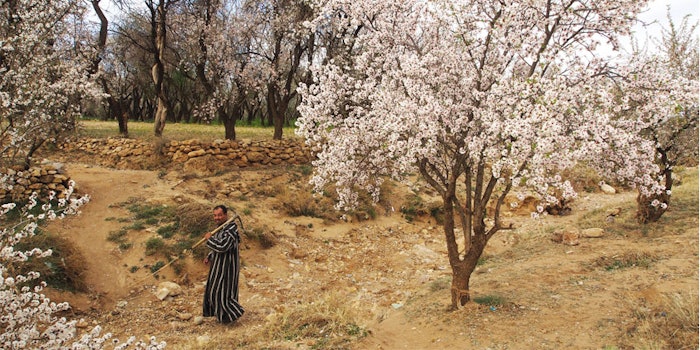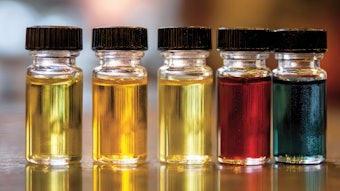
Bitter almonds and apricot almonds used in the production of the two corresponding bitter almond essential oils can be authenticated via DNA analyses to ensure purity and traceability at every step of the supply chain process.
Essential F&F Ingredients
Mainly composed of natural benzaldehyde (97-99.5%), these essential oils are far more expensive than synthetic benzaldehyde due to low yields in a multi-step process of production.1,2 Therefore, these essential oils have always suffered from adulteration, which can now be better controlled thanks to chemical analyses described in different studies, enabling differentiation of synthetic benzaldehydes from natural and genuine ones.3,4
Botanical Authentication Processes
Botanical authentication and traceability from raw materials to products are becoming essential for consumers and the cosmetics, flavor and fragrance, and nutraceutical industries.
Today, quality controls of these raw materials and products are made by morphological, or chemical analyses.5 When using botanical identifications based on morphological aspects, it is easy to confuse a species with another one. Moreover, contamination of plants can be missed. However, it is mandatory to perform these tests to release a new product on the market.
Footnotes:
- Benveniste B., Shaath N. A., Natural Oil of Bitter Almond, Perfumer & Flavorist, 16, 17–24 (1991).
- Clark G. S., An aroma profile: benzaldehyde, Perfumer & Flavorist, 20, 53–60 (1995).
- Remaud G., Debon A. A., Martin Y., Martin G. G., Martin G. J., Authentication of Bitter Almond Oil and Cinnamon Oil: Application of the SNIF-NMR Method to Benzaldehyde, J. Agric. Food Chem., 45, 4042–4048 (1997).
- Yang X., Jordan J., Vernice G. G., Che Y., Deuterium Distribution in Benzaldehyde Molecules by SNIF-NMR Analysis, “Natural Flavors and Fragrances,” Vol. 908, ed. by Frey, Carl, Rouseff, Russell, American Chemical Society, Washington D.C., 2005, pp.79–90.
- Harborne A. J., “Phytochemical Methods A Guide to Modern Techniques of Plant Analysis,” 3rd ed., Springer Netherlands, 1998.
For the full article, please check out the Perfumer & Flavorist+ April 2021 issue.










